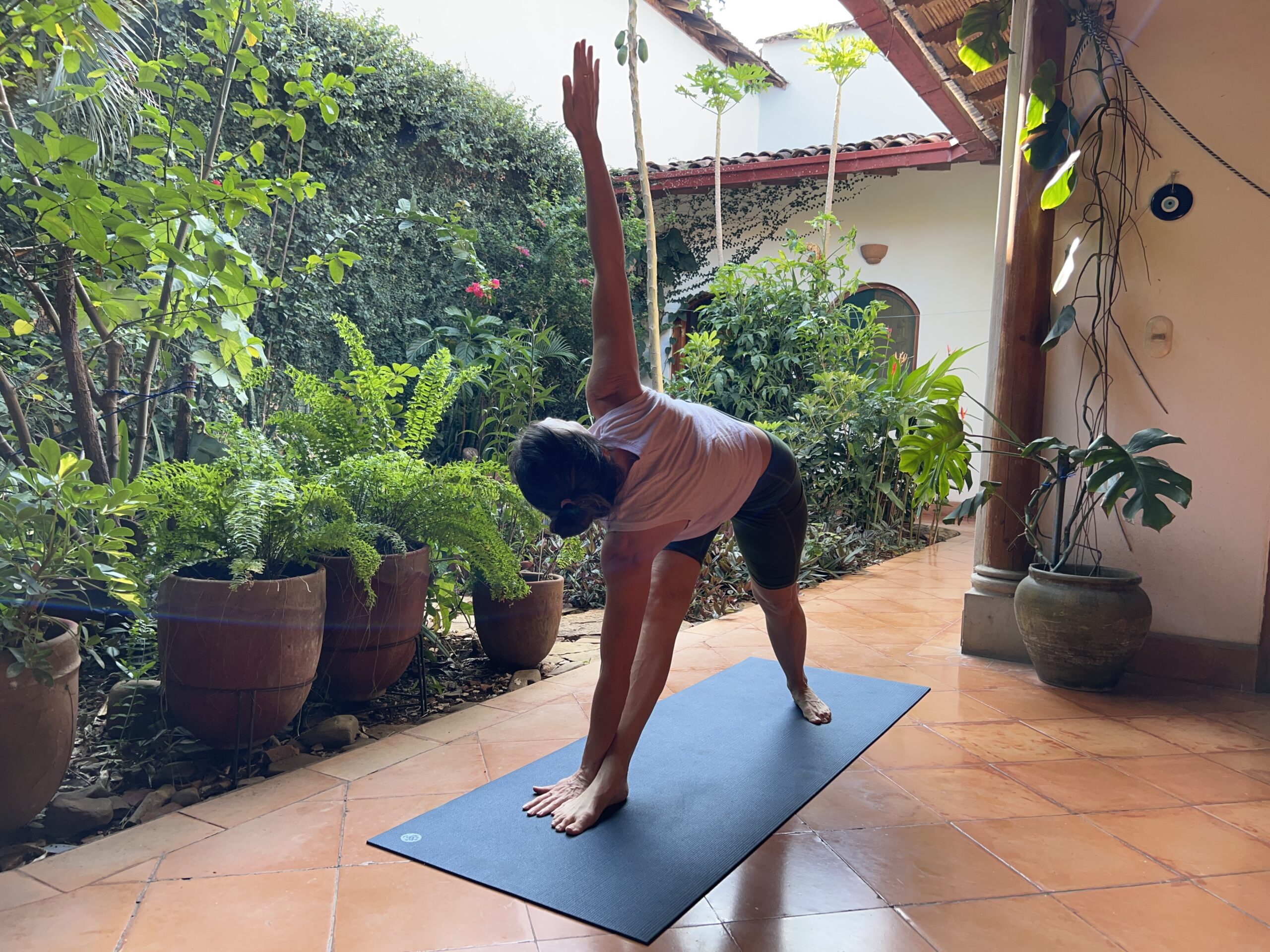
magine that when you first wake up, you swing your feet off the bed and take a big stretch - reaching your arms to the left and right. You rise and walk into the kitchen to brew yourself a nice cup of joe - reaching high on the shelf for the coffee grounds and twisting to place it on the table behind you. You bend down to pet your dog - folding forward and coming up to take another big stretch overhead.
You’ve only been awake for 5 minutes, and you’ve already moved through all three planes of motion: transverse, frontal, and sagittal. It’s going to be a great day!
Article Topics
What are Planes of Motion?
We can describe how our bodies anatomically move in different directions by discussing the three motion planes. Not just in yoga but in our daily activities, our bodies are moving through planes of time and space either forward and back (sagittal), side to side (frontal), or by rotation (transverse). Sometimes, we incorporate multiplanar movements through 2, if not all, three planes of motion.
To create some awareness of the planes of motion, you first must understand the proper anatomical posture of Tadasana- standing with a tall spine, feet forward, arms down by the sides, and palms open. Then, you can visualize how your body in Mountain Pose is split between 3 different sheets of glass separating the three planes. Knowing which plane of motion each asana moves through can help you understand proper alignment.
Sagittal Plane
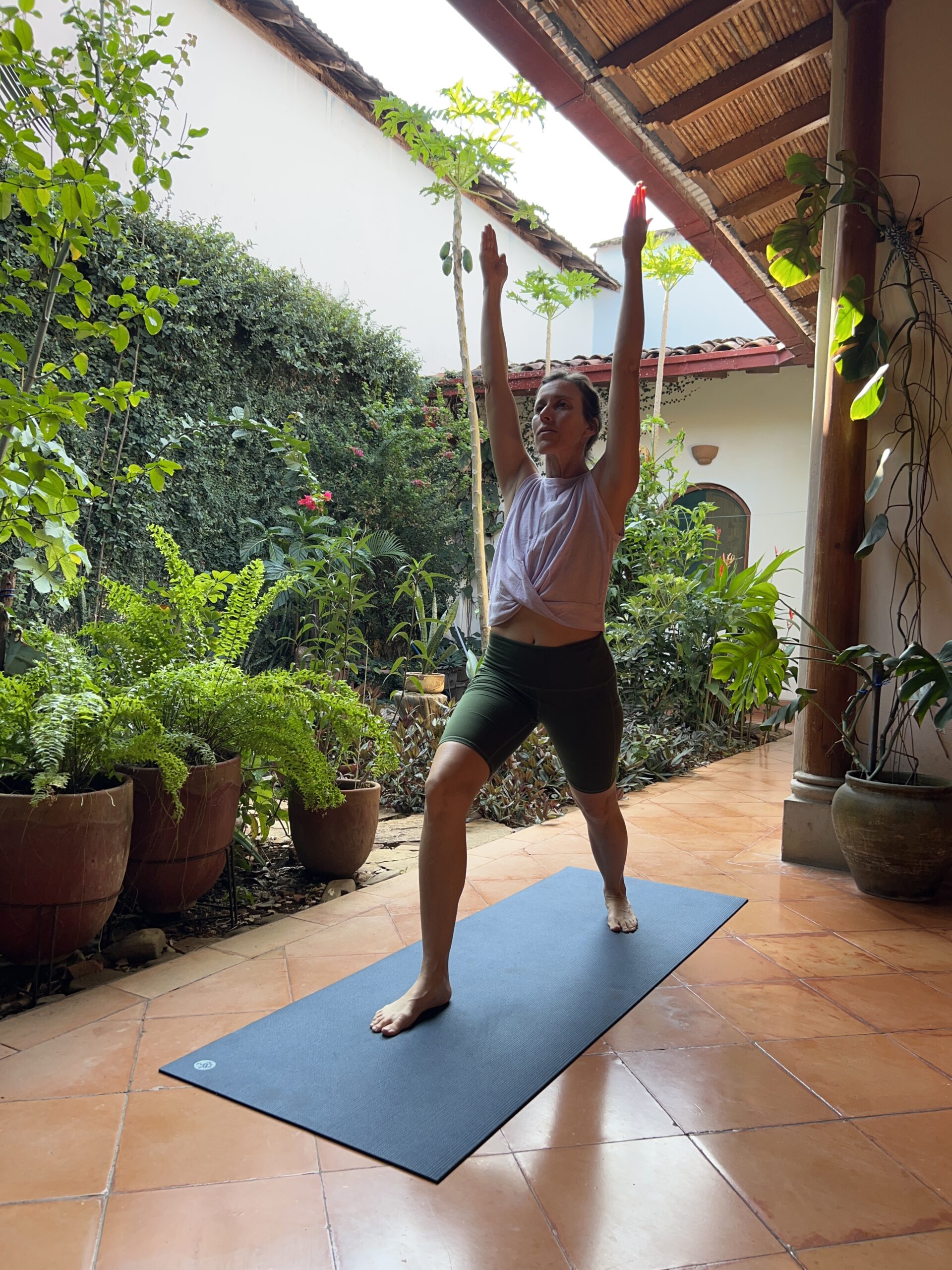
An Example of a Sagittal Plane of Motion
Yoga Poses in the Sagittal Plane
Frontal Plane
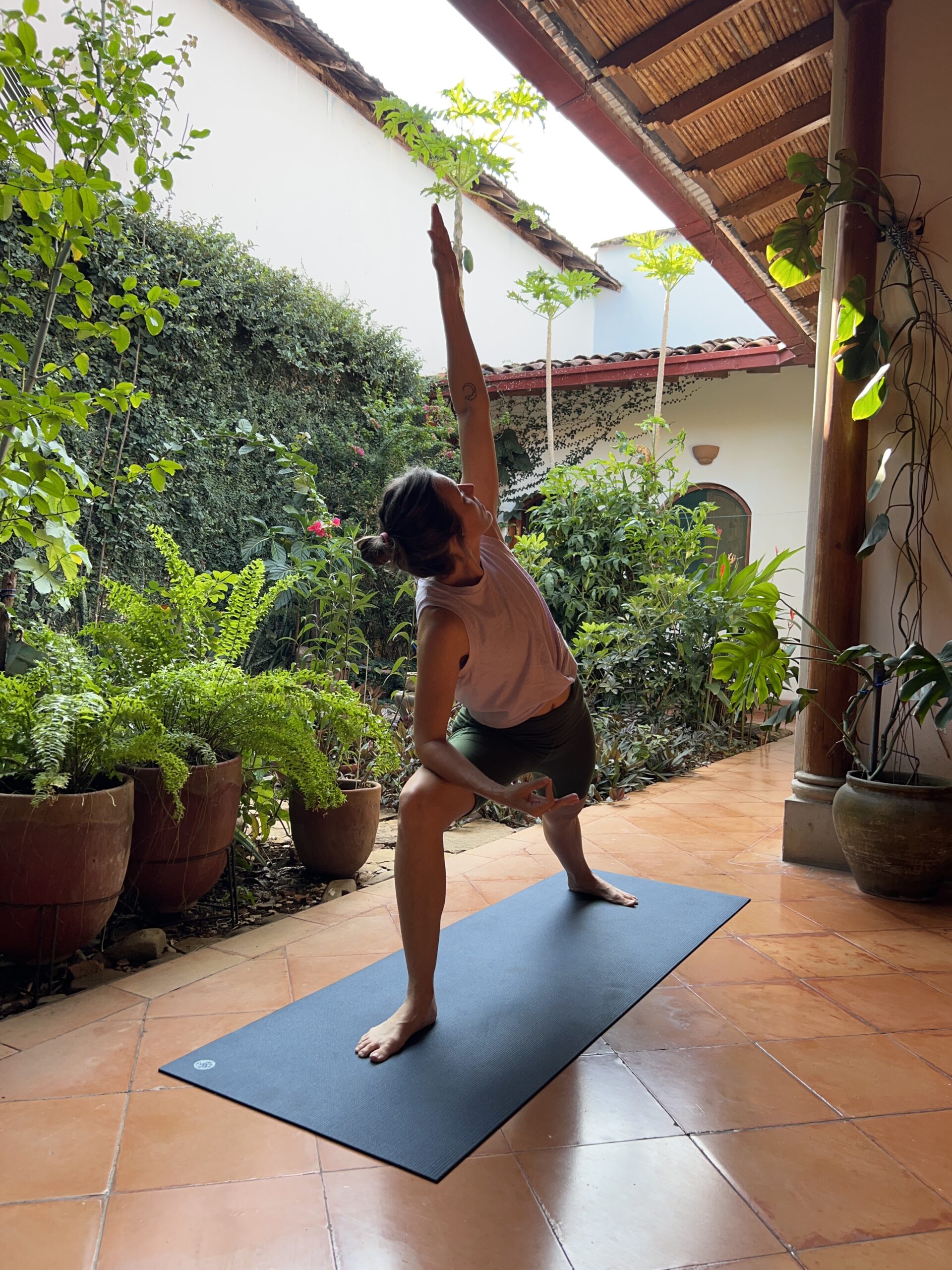
A Yoga Instructor Demonstrating a Sagittal Plane of Motion
The second piece of glass cuts through the center vertically, separating the front and back of your body. When you move alongside the glass (the frontal plane), your body moves from side to side. Reaching over to the left and the right in a simple morning stretch is an example of a frontal or coronal movement.
Yoga Poses in the Frontal Plane
Now, you can think of asanas in which your hips are open to the long side of your mat. Warrior 2, Peaceful Warrior, Side Lunge, Side Angle, and Triangle are some of the ones that come to mind! Think of your body moving like a cartwheel through time and space in these postures. You may have heard the cue, “Imagine your body is being pressed between 2 sheets of glass.” This reminds you to stay in the frontal plane of motion.
Transverse Plane
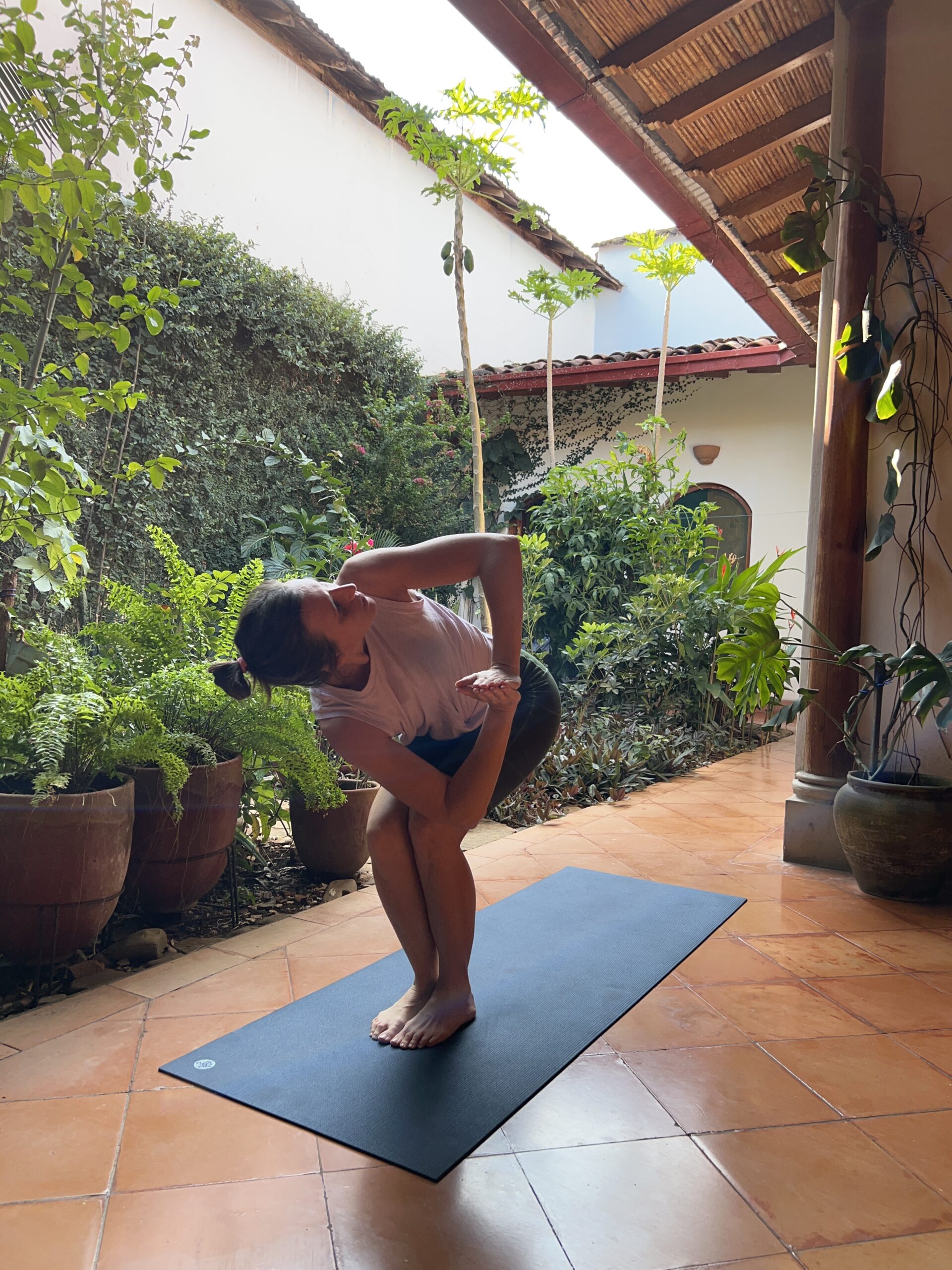
Amber Helms, a Yoga Instructor Demonstrating a Transverse Plane of Motion
The third piece of glass cuts through the center of your navel horizontally, separating your body’s upper and lower parts. When you move alongside the glass (the transverse plane), your body rotates. Any sort of twist is considered a transverse movement.
Yoga Poses in the Transverse Plane
Think of your seated twists like Marichyasana, standing twists like Chair Pose, or your Supine Twist lying down on your back – these are asanas where the upper body moves away from the lower body or vice versa. Initially, you may believe that revolved postures are just twists, but they require moving into the sagittal or frontal plane before moving safely into the transverse plane.
Multiplanar Movements
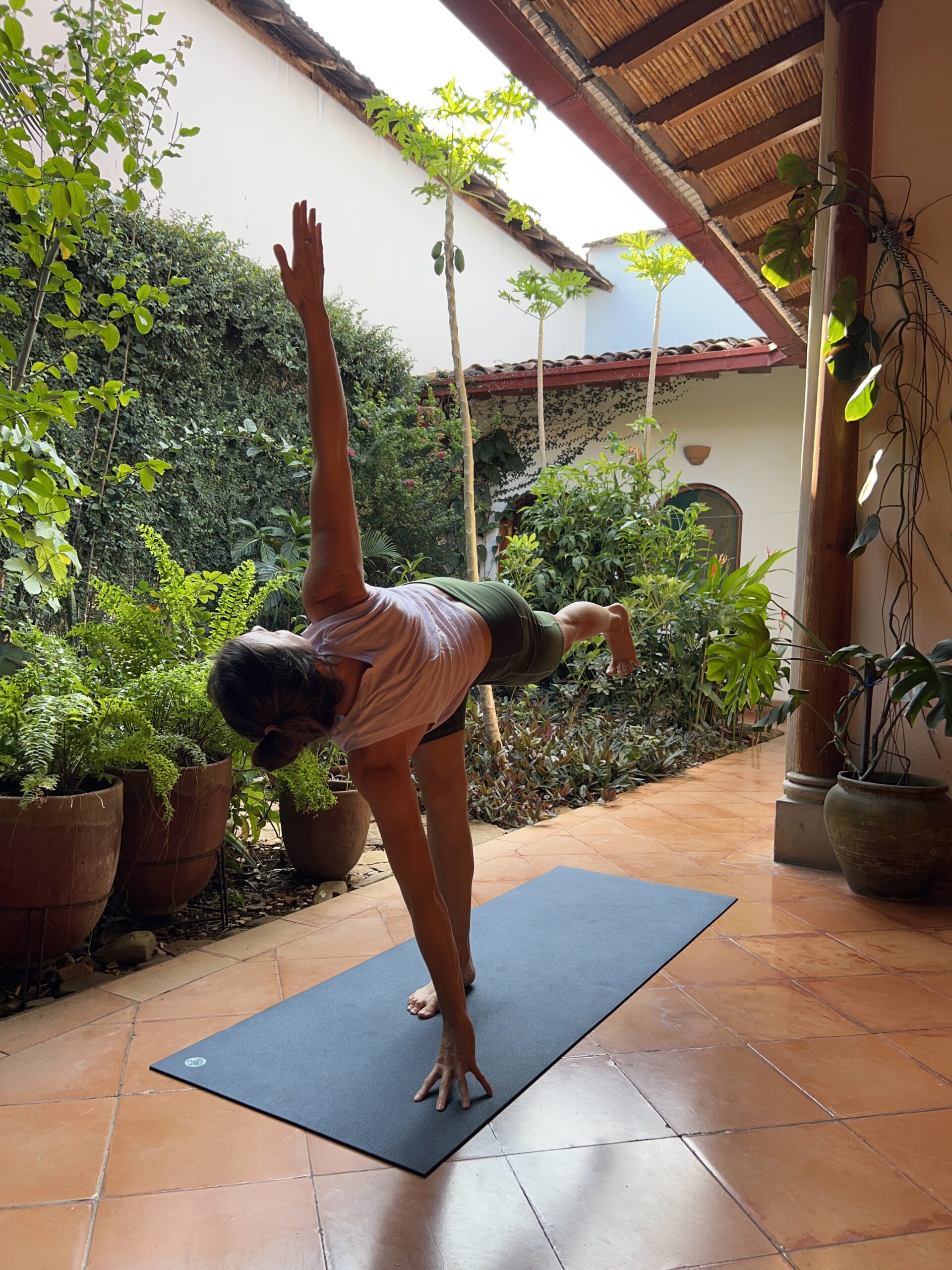
Example of a Sagittal Plane of Motion
Multiplanar movements require moving through 2 or more planes of motion. These will be your more challenging postures because they require more flexibility, strength, and balance, deepening your yoga practice.
When creating yoga sequences, you can intentionally plan for some multiplanar movements. For example, the Half Moon pose starts in the frontal plane, but then you can add a revolving element by placing one hand inside of the foot while the other arm reaches up and rotates the chest open. Revolved Half Moon now has you twisting, balancing, and lengthening. You’ve upped the ante!
There are many benefits to a dynamic yoga practice that incorporates movement across all planes. You will move through your daily activities more efficiently, unlike stationary people who could easily injure themselves reaching and twisting for that bag of coffee! Your body will start to build muscle to support the spine in your twists, keeping you in better health to accomplish everyday tasks!
Mastering Yoga Movement Across All Three Planes
In most yoga classes, you’ll naturally incorporate all three planes of motion without much thought, but you can intentionally add multiplanar movements to assemble a great yoga sequence!
Indeed, you can include a heart opener in your side lunge so that your frontal movement now includes a twist. Can you take your body from the frontal plane in Half Moon into the sagittal plane in a Sugar Cane Posture? Try a Surya Namaskara with some added side bends and standing twists. There are various options, and you get the creative freedom to move between each plane of motion safely!
When you integrate planar awareness into your yoga practice, you are building a stable foundation upon which to build. Now, you can easily transition with proper alignment, strengthen your mobility and balance, and create a more dynamic and challenging practice.
Incorporate sagittal, frontal, transverse, and multiplanar movements into your next yoga session!



